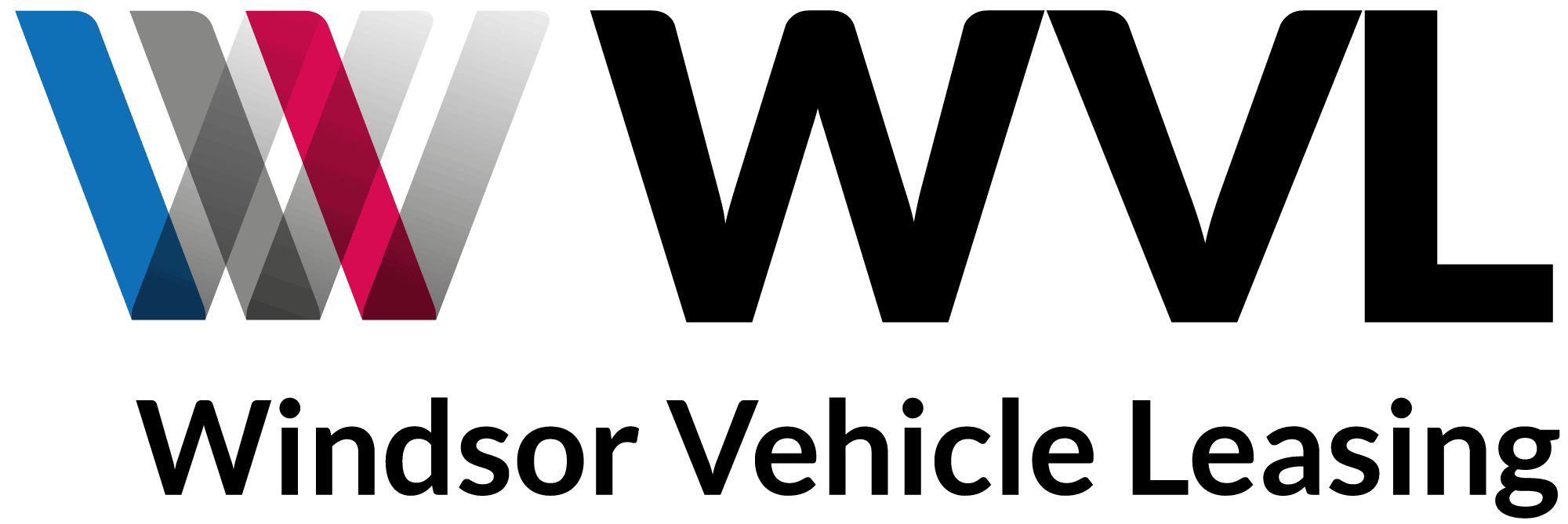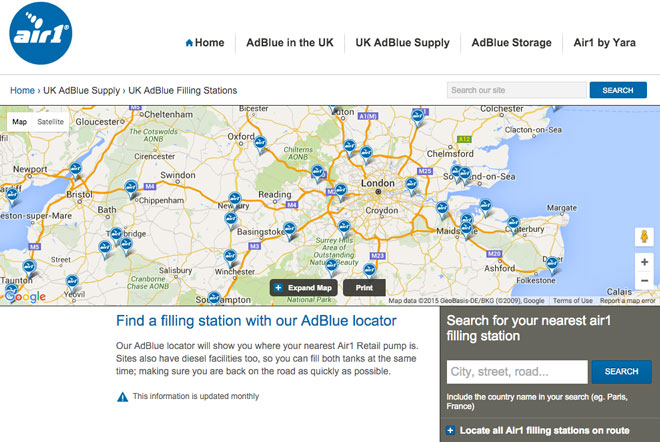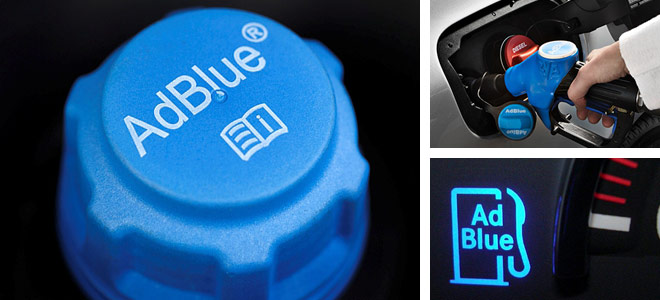
Going Green with AdBlue
Going Green with AdBlue https://wvl.co.uk/wp-content/uploads/adblue-featured.jpg 660 300 Anthony https://secure.gravatar.com/avatar/0ce9a76712b2ebb44190c51857fae37600a61d6fe57138c94dce31a727aa27ec?s=96&d=mm&r=gWith all the recent focus on vehicle emissions, we thought it worth flagging something of a positive in the industry: an eco innovation which isn’t yet commonplace but is gaining ground and has the potential to significantly reduce pollution from diesel engines: AdBlue.
Positive Reaction
Based on simple chemistry, AdBlue is a high purity urea solution which, when combined with the harmful nitrous oxides in the vehicle exhaust gases, reacts to convert around 90% of them to harmless nitrogen and water vapour. It actually enables manufacturers to take a legitimate shortcut to make their diesel engines comply with Euro-6 emission regulations which came into force 1st January 2015 to improve air quality.
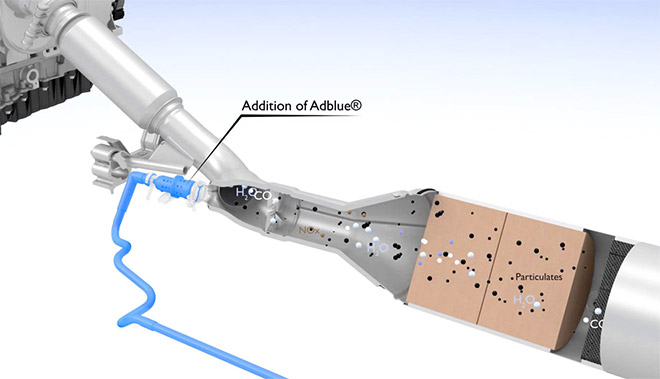
Introduced initially in larger commercial vehicles, we’re now seeing the system being a feature in the latest diesel cars and vans.
Whilst it may be just an additive, vehicles do require a new form of exhaust incorporating the new Selective Catalytic Reduction (SCR) system, plus a dedicated tank for adding the solution. It’s therefore not something which can be retrofittable, but is a feature worth looking out for when selecting a new vehicle.
Keep topped up
AdBlue is, as the name suggests, a blue additive, and it’s vital that you keep it topped up just as you would your oil or washer fluid. When your AdBlue falls to a certain level – 3 litres in Mercedes cars, for example – vehicles are equipped with a warning system to advise you to refill. The engine management computer may also limit performance as a further precaution, and to encourage you to take action.
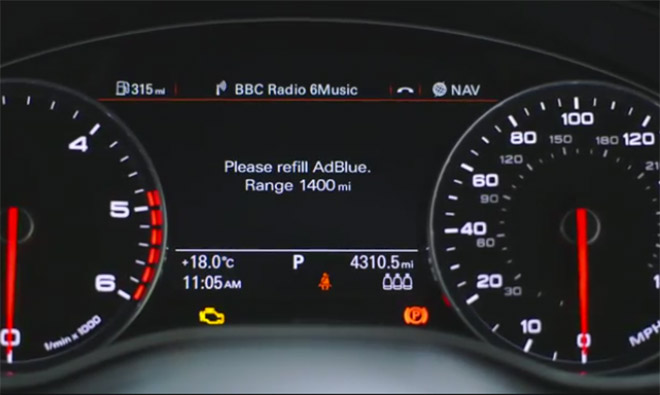
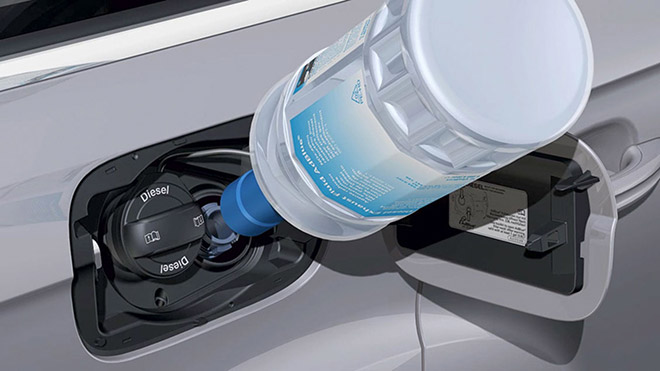
If you run out, the vehicle won’t start, so it’s crucial to keep tabs as any damage caused won’t be covered by your warranty. It’s important that fleet managers understand the responsibilities of correctly maintaining AdBlue-equipped vehicles, particularly with the variable service intervals common these days, and that employees are aware of the consequences should they ignore the warnings when levels get low.
A number of manufacturers, e.g. Mercedes, will refill your AdBlue during services, but top-ups between services may be needed depending on the size of the tank plus mileage, vehicle load, driving style and road conditions. Consumption rates are quoted as 4–5% of diesel use.
In cars, the filler will generally be next to the fuel filler, though sometimes they are to be found in obscure places like under a seat in the C4 Picasso. Commercial vehicles tend to have fillers in the engine bays, and are able to top up at a large number of filling stations across the country as they may need to do so as often as every week – see this interactive map or download a handy app for Android or iOS.
Since the nozzle won’t fit cars, topping up smaller vehicles either requires going back to a dealership or ordering online – you can even get it from Amazon!
Availability
So far, the system can be found in Mercedes’ ‘BlueTEC’ range, the BMW 5 Series and X5 range, Audi and Volkswagen in their TDI models, and Vauxhall in some Insignia, Zafira Tourer and Cascada models. Other marques have also started to introduce the technology including Citroën, DAF, Ford, GM/Opel, Hyundai, Iveco, Mazda, Peugeot, Renault, Scania, Toyota and Volvo.
AdBlue will, according to BMW, soon be a household name.
As emissions rules and control measures become increasingly stricter, it’s good to know there are safe and inexpensive technologies available to reduce the pollution derived from our vehicles. Whilst some may consider it an inconvenience to have another consumable to monitor, it’s a small price to pay to keep our vehicles motoring, and their dangerous pollutants minimised.
If you’d like more information about adding AdBlue-equipped vehicles to your fleet, contact us and we’ll be happy to advise on current options and deals.
